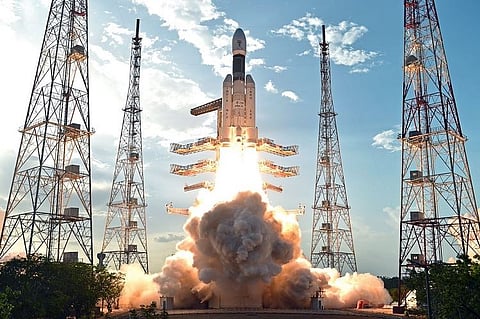

India’s second moon mission Chandrayaan-2 is scheduled for lift-off during the launch window of July 9-16, 2019 with an expected moon landing on September 6, 2019. ISRO has announced that preparations are on in full swing for the Geosynchronous Satellite Launch Vehicle Mark III or GSLV Mk III, dubbed "The Bahubali”, to carry India's spacecraft to the moon.
Here are 8 things to know about the mission: